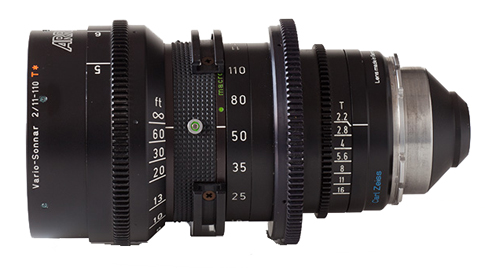Alas, it is not to be. The Super-16 format image circle is 14.55mm. That is the diagonal of the frame, or the widest projection the lens must make at all focal lengths and apertures in order to properly expose the image. However, the sensor of the Blackmagic has an 18.14mm diagonal. Most Super-16 prime and zoom lenses have a modest amount of over-projection to cleanly cover the image, but they won't reach as far as this much-larger sensor. There are a few Super-16 lenses that do happen to project a large enough image, but there aren't enough to make for a working set and more significantly, this extra image projection was never optically designed to be captured, so the visual performance would be less than stellar.
So what lenses can be used? Any lens designed to cover any 35mm format will work. This includes Academy 35mm, Super-35, any still format of 35mm, etc. The camera comes standard with a Canon EF mount and every lens ever made for that mount will cover the sensor without issue. There are common adapters to convert other 35mm format lenses to Canon EF mount, such as Nikon mount lenses, which also will cover the Blackmagic Design sensor. Coming soon from Blackmagic is a version of the camera with a Micro 4/3" format lens mount. The image circle for that format is just a little larger than the Blackmagic's, so these lenses will cover just fine. Using the AbelCine HDx2 B4/PL Optical Adapter, a 2/3" HD video lens will fully cover the image area as well.
Unclear as to how these different sized imagers will effect the field of view from a lens you are used to using? The AbelCine Field of View Comparator tool will help to visualize the differences and allow you to calculate the focal length you need for your shots.
Please note: This article only refers to the Blackmagic Cinema Camera - not other models such as the Blackmagic Pocket Cinema Camera.

















